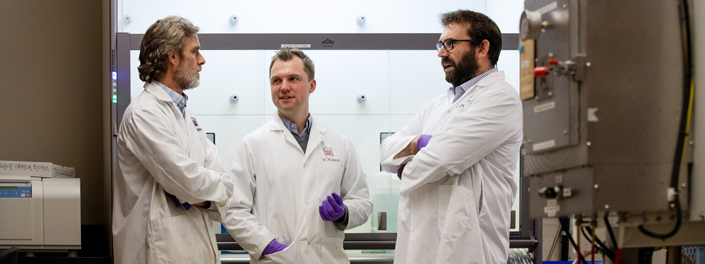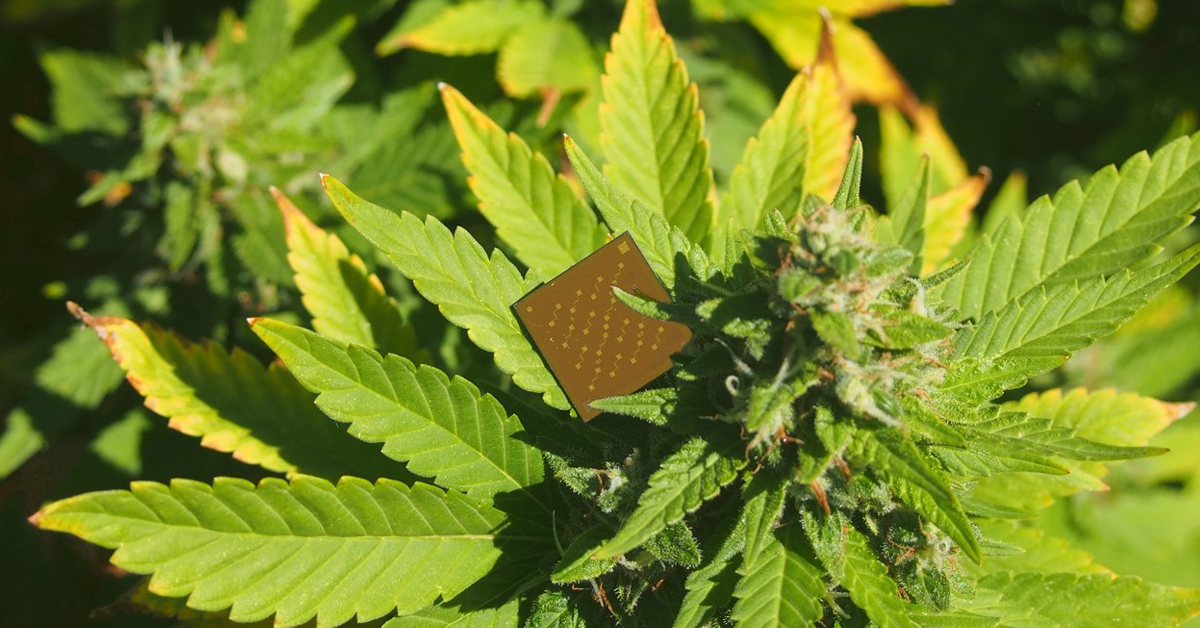

uOttawa researchers develop quick, inexpensive and user-friendly tech that detects and identifies the contents of cannabis.
When cannabis was legalized in Canada one year ago, uOttawa chemistry professor Adam Shuhendler, and his wife, a public health nurse, wondered what this new reality would mean for public health, law enforcement and growers and consumers.
“We were trying to imagine how cannabis would be regulated and realized that there was a technology gap for rapid cannabis detection,” says Shuhendler. “Currently, people test the ratios of THC and CBD through really advanced analytical chemistry. That isn’t accessible to everybody and it’s quite expensive. So, I decided to look into it.”
Shuhendler approached two uOttawa professors for help: Benoît Lessard, an associate professor in the Department of Chemical and Biological Engineering, who specializes in building organic electronic devices, and Cory Harris, an associate professor in the Department of Biology, whose lab focuses on licensed cannabis research and analytics.
Together, the group developed a technology that can detect the presence of cannabis, differentiate between different cannabinoids, such as THC and CBD – two of the most commonly known and sought-after chemical compounds in cannabis plants – and measure their ratio and potency.
The device they built, which looks like a microchip, undergoes a chemical reaction when it comes into contact with a cannabinoid. The device gives off a different electrical signal depending on what cannabinoid it interacts with, which then translates into a numeric readout that identifies the ratio of one cannabinoid versus another.
The group compared the results of its technology to the gold standard of cannabis testing on an HPLC machine, and the results from their reader came within 5%. But currently, this gold standard for testing cannabis samples is laborious, cumbersome and expensive.
More accessible cannabis testing will allow consumers to make informed decisions about their purchases, based on the potency and composition. For growers, this new technology could also be a game changer, allowing them to test their crops at different stages of growth and under varied environmental conditions.
“You don’t want to wait until it is fully-grown to know the potential value of that crop,” says Harris. “So, in terms of monitoring throughout the growing process, depending on what you’re looking for, THC or CBD, you can direct your resources appropriately among your different crops.”
The group has patented this technology and is launching a start-up called Ekidna Sensing, Inc. with graduate student Nic Boileau to build and market these cannabis testing kits, expected to be the size of a standard printer.
